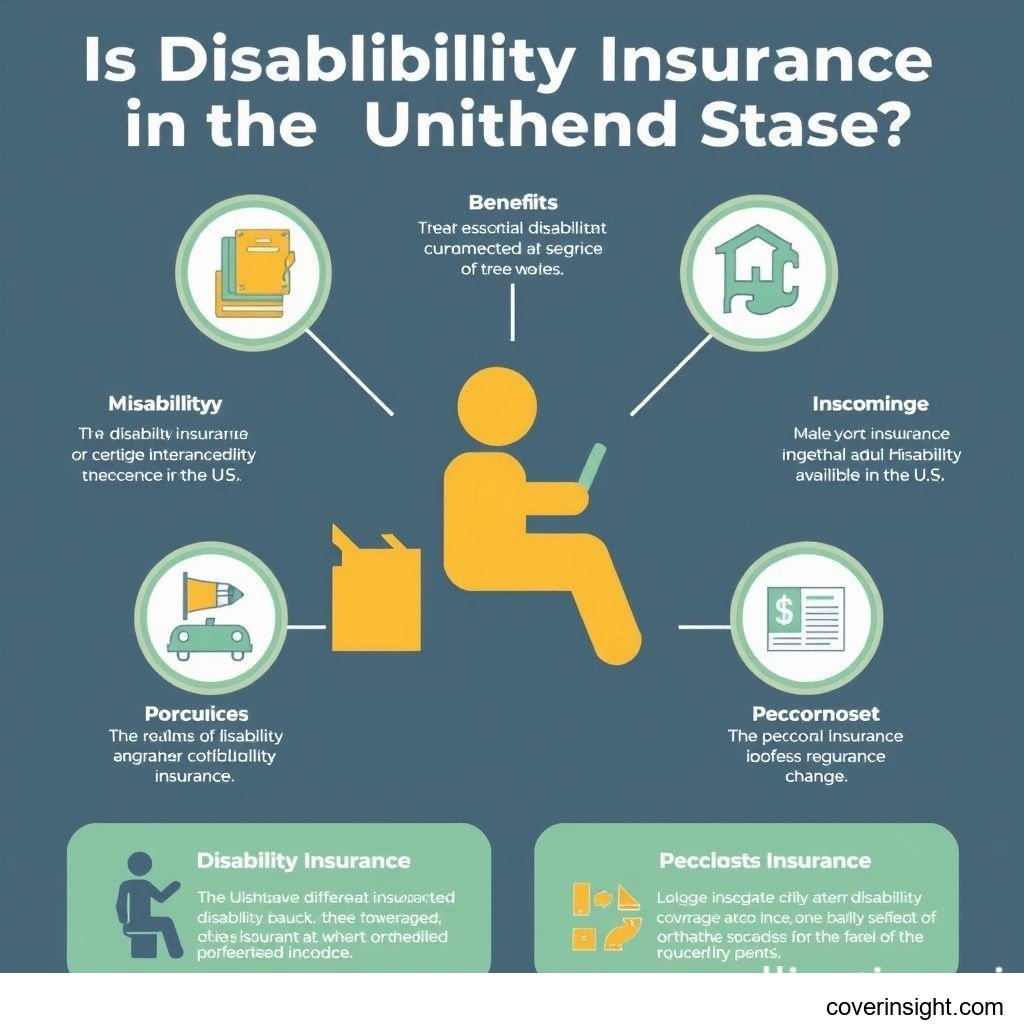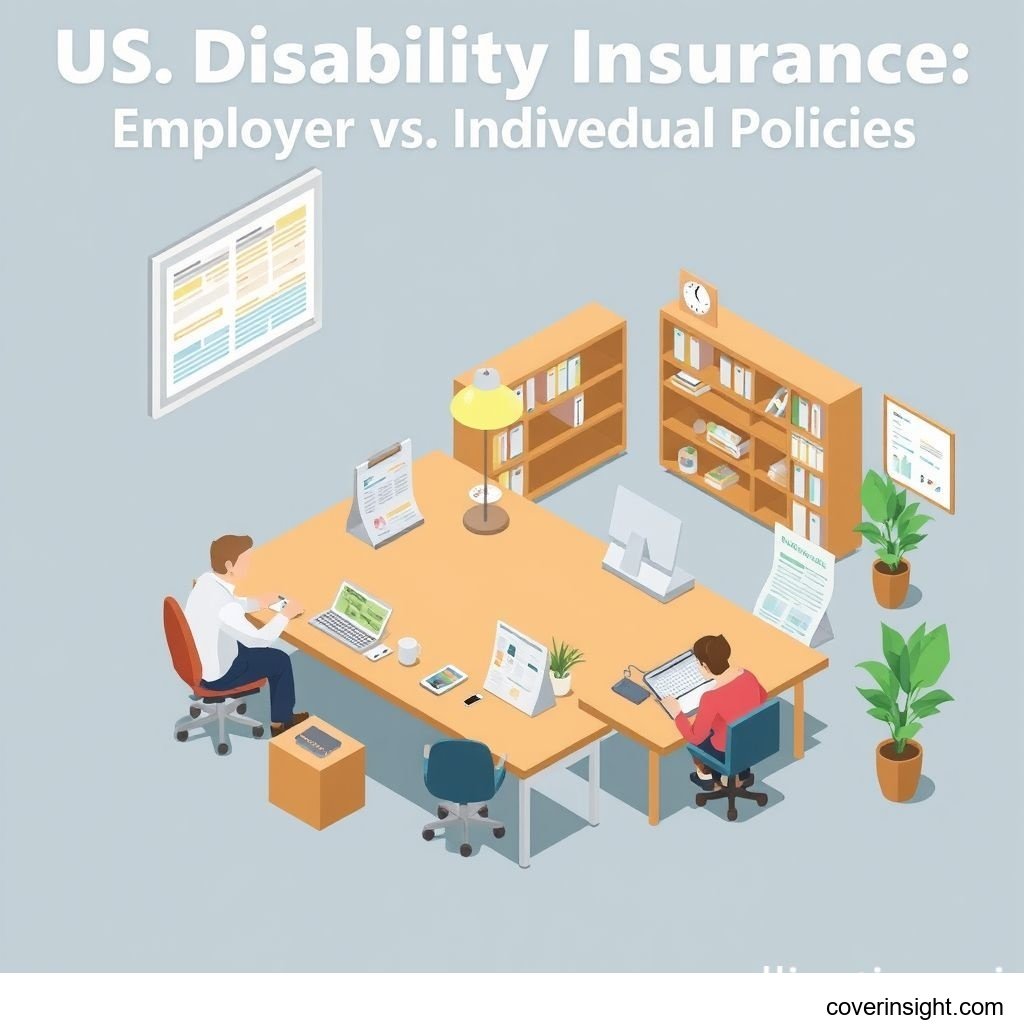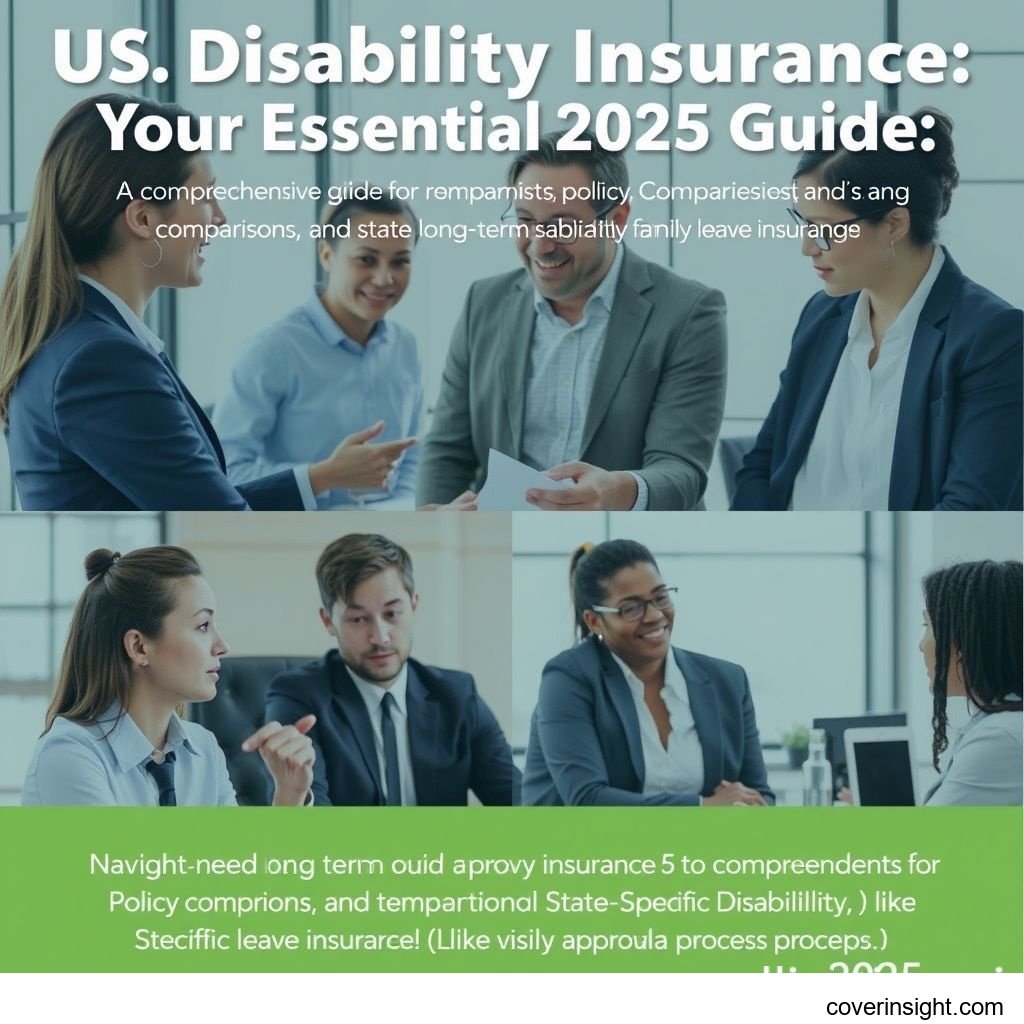Do I Need Disability Insurance in US? Your Essential 2025 Guide
Introduction
Understanding if and why do I need long term disability insurance in the US is a critical financial consideration for 2025. In an unpredictable world, our ability to earn an income is our most valuable asset. Yet, many overlook the significant risk of a long-term disability, which can severely impact financial stability. This guide will explore why evaluating your need for this vital protection is essential, helping you make informed decisions for your future security.
Who Needs Disability Insurance in US?
Many ask, "do I need long term disability insurance?" The truth is, anyone whose livelihood depends on their ability to work should consider it. Statistics show that a significant percentage of working Americans will experience a disability lasting longer than 90 days at some point in their career. This isn't just about severe accidents; it includes illnesses like cancer, heart disease, or chronic conditions that prevent you from performing your job.
Common Scenarios Requiring Coverage
-
Sole Breadwinners: If your family relies solely on your income, a disability could be catastrophic. Long-term disability insurance replaces a portion of that lost income, ensuring your family's needs are met.
-
Self-Employed Individuals: Without employer-sponsored benefits, self-employed professionals are particularly vulnerable. Individual policies are crucial for maintaining personal and business finances.
-
Individuals with Limited Savings: If you don't have an emergency fund capable of covering months or years of living expenses without income, do I need long term disability insurance becomes a resounding "yes."
-
People in Physically Demanding Jobs: While obvious, it's worth noting that careers involving manual labor or hazardous conditions face higher risks, making coverage imperative.
-
White-Collar Professionals: Even office workers are not immune. Conditions like chronic back pain, mental health issues, or illnesses can lead to long absences.
Dispelling Myths About Disability
Many believe Social Security Disability Insurance (SSDI) or workers' compensation will suffice. However, these programs have limitations:
-
SSDI: Is notoriously difficult to qualify for, has a lengthy waiting period, and typically provides modest benefits that may not cover all your expenses. Eligibility requires proving you cannot do any substantial gainful activity, not just your specific job.
-
Workers' Compensation: Only covers injuries or illnesses directly related to your job. The vast majority of disabilities are non-work related.
Considering these limitations, seriously evaluating do I need long term disability insurance is a proactive step toward comprehensive financial planning.
Coverage Details
When you do I need long term disability insurance, understanding what it covers – and what it doesn't – is paramount.
What’s Included in a Policy
Long-term disability insurance typically provides a monthly income benefit if you become disabled and cannot perform the duties of your occupation. Key components include:
-
Benefit Amount: Usually 60-80% of your pre-disability gross income. This non-taxable income (if you pay premiums with after-tax dollars) helps cover living expenses.
-
Definition of Disability:
-
Own Occupation: Pays if you can't perform your specific job. This is generally preferred but more expensive.
-
Any Occupation: Pays only if you can't perform any job for which you are reasonably qualified by education, training, or experience.
-
Modified Own Occupation: A hybrid, often paying if you can't do your own job and are not working in another occupation.
-
-
Benefit Period: The maximum length of time you can receive benefits (e.g., 2 years, 5 years, to age 65, or for life).
-
Elimination (Waiting) Period: The time between the onset of your disability and when benefits begin. Common options are 60, 90, or 180 days.
Common Exclusions from Coverage
While invaluable, policies have exclusions. Common ones include:
-
Self-inflicted injuries.
-
Disabilities resulting from war or acts of war.
-
Disabilities sustained while committing a felony.
-
Pre-existing conditions, unless explicitly covered after a certain waiting period (e.g., 12-24 months).
-
Normal pregnancy and childbirth (though complications are often covered).
-
Certain high-risk activities like professional sports or aviation, unless specifically added via rider.
Always review the policy's fine print to ensure it aligns with your expectations about whether do I need long term disability insurance with specific coverage.
Understanding Waiting Period Options and Benefit Periods
One of the most critical aspects to consider when determining do I need long term disability insurance is the choice of your waiting period and the length of your benefit period. These directly impact both your premium and the policy's effectiveness.
Choosing the Right Waiting Period Options
The waiting period (also known as the elimination period) is the time you must wait after becoming disabled before your benefits begin. Common waiting period options include:
-
30 days: Very short, but significantly increases premiums.
-
60 days: Less common for long-term policies, more for short-term.
-
90 days: This is the most common and often recommended waiting period options for long-term policies. It strikes a balance between affordability and benefit access, allowing short-term disability benefits or an emergency fund to cover initial expenses.
-
180 days: A longer period that reduces premiums. Suitable if you have a robust emergency fund or strong short-term disability coverage.
-
365 days or more: Less common, primarily chosen by those seeking the absolute lowest premiums and possessing substantial savings.
Selecting the appropriate waiting period options should align with your existing savings and other insurance coverage (like short-term disability). A longer period means lower premiums, but requires greater personal financial resilience during the initial phase of disability.
Defining Your Benefit Period Lengths
The benefit period is the maximum duration for which you can receive disability payments. Typical benefit period lengths include:
-
2 years
-
5 years
-
10 years
-
To age 65 or 67 (retirement age)
-
Lifetime (very rare and expensive now)
For most people, a benefit period extending to age 65 or 67 is advisable. This ensures coverage through your working years, protecting your retirement savings if a long-term disability prevents you from returning to work. A shorter benefit period will significantly reduce your premiums, but also increase your risk of financial hardship if the disability extends beyond that period. Considering how long you might need income replacement is key when evaluating do I need long term disability insurance.
Cost Analysis: How Much Does Do I Need Long Term Disability Insurance Cost?
Understanding the cost is often the next logical step after asking, "do I need long term disability insurance?" While it's an investment, the cost is often more affordable than perceived, especially when weighed against the potential loss of income.
Key Price Factors Influencing Premiums
Several factors determine how much do I need long term disability insurance will cost you:
-
Age: Younger applicants generally pay lower premiums because they have a longer expected working life ahead and are statistically less likely to become disabled soon.
-
Health: Your current health status, medical history, and any pre-existing conditions significantly impact your rates. Insurers will review your medical records during underwriting.
-
Occupation: Riskier jobs (e.g., construction workers, pilots) typically lead to higher premiums than less risky ones (e.g., office workers). Some occupations may even be declined.
-
Benefit Amount: The higher the percentage of your income you want to replace, the higher the premium.
-
Benefit Period: As discussed, a longer benefit period (e.g., to age 65) will cost more than a shorter one (e.g., 5 years).
-
Waiting Period Options: Shorter waiting period options result in higher premiums, as benefits would begin sooner.
-
Riders: Optional additions like a cost of living adjustments rider or future increase options will increase your premium.
-
Gender: Historically, women have paid higher premiums due to higher claim rates for certain conditions, but some states or policies use unisex rates.
Smart Saving Tips for Affordable Coverage
Even if you determine that do I need long term disability insurance, you can manage its cost:
-
Choose a Longer Waiting Period: Opting for a 90-day or 180-day waiting period instead of 30 or 60 days can significantly reduce your premiums. Ensure you have sufficient emergency savings to cover this period.
-
Select a Reasonable Benefit Amount: You don't always need 80% coverage. Consider covering 60-70% of your income, especially if some expenses would decrease during disability (e.g., commuting costs).
-
Buy Younger: Premiums are locked in when you purchase the policy, so buying when you are younger and healthier can save you a lot over the long term.
-
Decline Unnecessary Riders: While some riders are excellent, evaluate if you truly need all of them. For instance, if your income is stable, a future increase option might be less critical.
-
Check Group Policies: If available through your employer or professional association, group policies are often cheaper, though individual policies usually offer better features and portability.
-
Improve Your Health: Maintaining a healthy lifestyle can positively impact your underwriting class and potentially lower your premiums.
By strategically adjusting these factors, you can find a policy that fits your budget while providing essential protection.
Comparing Policies: Key Considerations and Cost of Living Adjustments
When you've decided, "Yes, do I need long term disability insurance," the next step is comparing policies. This involves more than just looking at the price; it requires a detailed understanding of policy features, particularly riders like the cost of living adjustments.
Evaluating Policy Riders and Enhancements
Riders are optional add-ons that customize your policy. While they increase the premium, some are invaluable:
-
Future Increase Option (FIO) / Guaranteed Insurability Rider: Allows you to increase your coverage later without further medical underwriting, crucial as your income grows.
-
Partial/Residual Disability Rider: Pays a partial benefit if you can work part-time but are still disabled and experiencing income loss. This is highly recommended.
-
Non-Cancelable and Guaranteed Renewable: This ensures your policy cannot be canceled by the insurer (unless you stop paying premiums) and your premiums cannot be raised as long as you pay them. This is the strongest type of policy.
-
Rehabilitation Benefit: Covers expenses for job training or rehabilitation programs to help you return to work.
-
Catastrophic Disability Rider: Provides an extra benefit if your disability is severe (e.g., loss of two or more activities of daily living).
The Importance of Cost of Living Adjustments (COLA)
A crucial rider to consider is the cost of living adjustments (COLA) rider. If you become disabled and are receiving benefits, inflation can erode the purchasing power of your fixed monthly payments over time. A cost of living adjustments rider addresses this by increasing your benefit amount annually while you are on claim.
For example, if your benefit starts at $3,000 per month and you have a 3% cost of living adjustments rider, your benefit would increase to $3,090 in the second year, $3,182.70 in the third year, and so on. This ensures your benefit keeps pace with inflation, maintaining your standard of living. While it adds to the premium, the long-term financial security it offers can be well worth the extra cost, especially if you foresee a lengthy disability claim. This rider helps ensure your answer to "do I need long term disability insurance" is met with comprehensive future-proofing.
Individual vs. Group Disability Insurance Plans
When considering do I need long term disability insurance, you'll typically encounter two main types:
-
Group Plans (Employer-Sponsored):
-
Pros: Often cheaper or fully paid by your employer, easier to qualify for (less stringent underwriting), and provide basic coverage.
-
Cons: Coverage amount might be limited (e.g., 60% of base salary, excluding bonuses), may not be portable if you leave the job, benefits might be taxable if employer pays premiums, and "any occupation" definition of disability is common.
-
-
Individual Plans:
-
Pros: Tailored to your specific needs, typically offer stronger "own occupation" definitions, portable (stays with you regardless of employment), benefits are tax-free if you pay premiums with after-tax dollars, and allow for a broader range of riders.
-
Cons: Generally more expensive, require medical underwriting, and the application process can be more involved.
-
For robust protection, many financial advisors recommend supplementing group coverage with an individual policy to bridge any gaps and ensure the best definition of disability. This comprehensive approach fully answers "do I need long term disability insurance" with adequate security.
FAQs on Do I Need Long Term Disability Insurance
Here are some frequently asked questions to further clarify if do I need long term disability insurance and how it works:
-
How much does do I need long term disability insurance cost?
The cost varies widely but generally ranges from 1% to 3% of your annual income. For example, if you earn $70,000 per year, expect to pay between $700 and $2,100 annually, depending on your age, health, occupation, and policy features like the waiting period options and the inclusion of a cost of living adjustments rider.
-
What affects premiums?
Premiums are primarily affected by your age, health status, occupation, chosen benefit amount and period, waiting period options, and any riders you add. Generally, younger, healthier individuals in less hazardous occupations with longer waiting periods pay less.
-
Is it mandatory?
No, long-term disability insurance is not mandatory in the US. However, given the significant risk of disability and the potential financial devastation of lost income, it is highly recommended by financial experts.
-
How to choose the best policy?
To choose the best policy, assess your income replacement needs, evaluate the "definition of disability" (prefer "own occupation"), select a suitable benefit period (to age 65 often recommended) and waiting period options (90-180 days common), and consider essential riders like a future increase option and cost of living adjustments. Comparing quotes from multiple reputable insurers is crucial. You can find reliable insurance resources via general Insurance Resources Global, or specifically for your region at US Insurance Home.
-
What are the consequences of no coverage?
Without coverage, a long-term disability can lead to severe financial hardship, including depletion of savings, reliance on family or public assistance, inability to pay bills or mortgage, and potential bankruptcy. It directly impacts your ability to meet essential living expenses and save for retirement.
Conclusion
Deciding if do I need long term disability insurance for 2025 is a personal but often critical decision. For most working Americans, it's not a luxury but a fundamental component of a sound financial plan. It protects your most valuable asset – your ability to earn a living – from unforeseen circumstances. By understanding the coverage details, evaluating waiting period options, factoring in cost of living adjustments, and comparing policies from reputable providers (like those found via the National Association of Insurance Commissioners or your specific State Insurance Departments), you can secure your financial future, no matter what challenges life may bring. Don't leave your income to chance; explore your disability insurance options today.








Comments